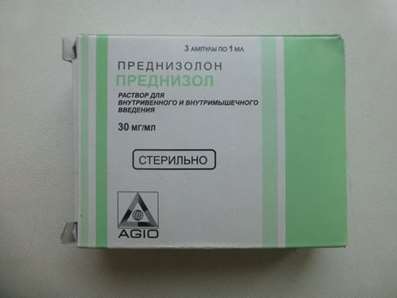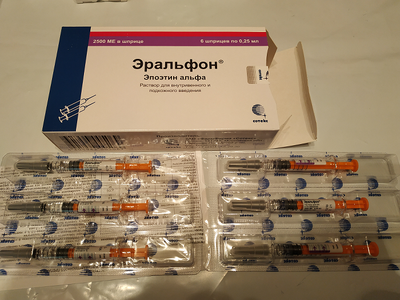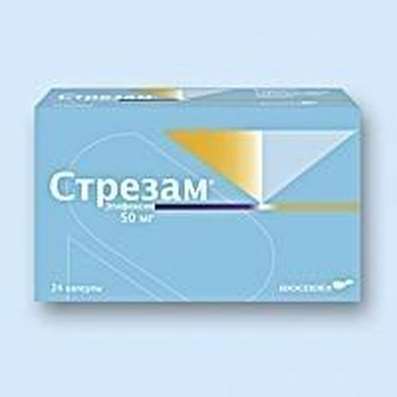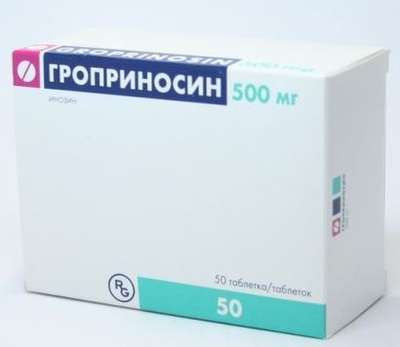Instruction for use: Olmesartan medoxomil
I want this, give me price
The trade name of Olmesartan medoxomil: Cardosal 10, Cardosal 20, Cardosal 40, Olmestra, Olmesartan medoxomil
Latin name of substance Olmesartan medoxomil
Olmesartani medoxomilum (genus. Olmesartani medoxomili)
Chemical name
(5-Methyl-2-oxo-2H-1,3-dioxol-4-yl) methyl 4- (2-hydroxypropan-2-yl) -2-propyl-1- ({4- [2- (2H- 1,2,3,4-tetrazol-5-yl) phenyl] phenyl} methyl) -1H-imidazole-5-carboxylate
Gross formula
C29H30N6O6
Pharmacological group of substance Olmesartan medoxomil
Angiotensin II receptor antagonists (AT1 subtype)
The nosological classification (ICD-10)
I10 Essential (primary) hypertension: hypertension; Arterial hypertension; Arterial hypertension crisis course; Essential Hypertension; Essential hypertension; Essential hypertension; Essential hypertension; Essential hypertension; Primary hypertension; Arterial hypertension, complications of diabetes; The sudden increase in blood pressure; Hypertensive disorders of blood circulation; hypertensive condition; hypertensive crises; arterial Hypertension; malignant Hypertension; Hypertonic disease; hypertensive crises; accelerated hypertension; malignant hypertension; The aggravation of hypertensive disease; Transient hypertension; Isolated systolic hypertension
I15 Secondary hypertension: Arterial hypertension, complications of diabetes; hypertension; The sudden increase in blood pressure; Hypertensive disorders of blood circulation; hypertensive condition; hypertensive crises; hypertension; arterial Hypertension; malignant Hypertension; hypertensive crises; accelerated hypertension; malignant hypertension; The aggravation of hypertensive disease; Transient hypertension; hypertension; Arterial hypertension; Arterial hypertension crisis course; renovascular hypertension; Hypertension symptomatic; Renal hypertension; Renovascular hypertension; renovascular hypertension; Symptomatic hypertension
CAS code
144689-63-4
Characteristics of the substance Olmesartan medoxomil
Selective antagonist of the AT1 subtype of angiotensin II receptors.
Olmesartan medoxomil is a crystalline powder from white to light yellowish white, almost insoluble in water, hardly soluble in methanol. Molecular weight 558.59.
Pharmacology
Pharmacological action - antihypertensive.
Olmesartan selectively blocks the angiotensin II receptor (AT1 subtype). Suppresses the AT1-receptor-mediated effects of angiotensin II (including such as vasoconstriction, stimulation of synthesis and release of aldosterone, cardiac stimulation, increased sodium reabsorption in the kidneys). Does not affect kinase II (ACE), which destroys bradykinin and is involved in the formation of angiotensin II.
With arterial hypertension, olmesartan causes a dose-dependent long-term decline in blood pressure. The use of olmesartan medoxomil once a day provides an effective and gentle decrease in blood pressure for 24 hours. The hypotensive effect of olmesartan develops, usually within 1-2 weeks, and the maximum effect is approximately 8 weeks after the start of therapy.
Pharmacokinetics
Olmesartan medoxomil is a prodrug. In the process of absorption from the digestive tract is hydrolyzed and quickly and completely turns into a pharmacologically active form - olmesartan. Absolute bioavailability of olmesartan is approximately 26%, food intake does not significantly affect bioavailability. After ingestion of Cmax, olmesartan in blood plasma is achieved within 1-2 hours. Binding of olmesartan to blood plasma proteins is 99%, binding to blood cells is insignificant. The volume of distribution of olmesartan is approximately 17.1 liters. Css is reached within 3-5 days. The total plasma clearance of olmesartan is 1.3 l / h, the renal clearance is 0.6 l / h. It is excreted by the kidneys (approximately 40%) and with bile (about 60%). Elimination of olmesartan is biphasic, terminal T1 / 2 is approximately 13 hours.
Pharmacokinetics in special clinical cases
Age. Values of Cmax olmesartan were similar in young people and in people older than 65 years. In elderly people with repeated doses, moderate cumulation of olmesartan, an increase in AUC by 33% and a decrease in renal clearance by 30% were noted.
Floor. Minor differences in pharmacokinetic parameters of olmesartan were observed depending on gender: AUC and Cmax were 10-15% higher in women than in men.
Impaired renal function. In patients with severe renal failure (Cl creatinine <20 ml / min), the AUC in the equilibrium state is increased 3-fold.
Violation of the function of the liver. An increase in AUC (about 60%) and Cmax was observed in patients with a moderate degree of impaired liver function compared to these parameters in healthy volunteers.
Application of the substance Olmesartan medoxomil
Essential arterial hypertension.
Contraindications
Hypersensitivity, bile duct obstruction, renal failure (Cl creatinine <20 ml / min), condition after kidney transplantation (no clinical experience), pregnancy, breast-feeding.
Restrictions
Stenosis of the aortic or mitral valves, hypertrophic obstructive cardiomyopathy, primary hyperaldosteronism, hyperkalemia, hyponatremia (risk of dehydration, arterial hypotension, renal failure), renal failure (Cl creatinine> 20 ml / min), chronic heart failure, bilateral stenosis of the renal arteries or arterial stenosis Single kidney, ischemic heart disease, cerebrovascular disease, age over 65 years, impaired liver function, conditions accompanied by a decrease in BCC (including diarrhea, vomiting), And also with a diet with sodium restriction; Simultaneous use with diuretics, age to 18 years (efficacy and safety of use not established).
Application of pregnancy and breastfeeding
Contraindicated in pregnancy (there is evidence that drugs that act directly on the renin-angiotensin system can lead to fetal and neonatal damage and even fetal death). If pregnancy occurs during the period of treatment, taking olmesartan medoxomil immediately stop.
The action category for fetus by FDA is D.
At the time of treatment, breastfeeding should be discontinued (there is no data on the penetration of olmesartan into the breast milk of women, but low levels of olmesartan are found in the milk of lactating rats).
Side effects of the substance Olmesartan medoxomil
Olmesartan medoxomil safety was evaluated in 3,825 patients, including 3,275 patients who received the drug in controlled clinical trials. In 900 patients, the therapy was performed for at least 6 months, more than 525 patients - at least 1 year.
Side effects observed in placebo-controlled clinical trials with a frequency greater than 1% in patients treated with olmesartan medoxomil were also observed with the same or greater frequency in patients receiving placebo: back pain, bronchitis, increased creatine phosphokinase, diarrhea , Headache, hematuria, hyperglycemia, hypertriglyceridemia, influenza-like symptoms, pharyngitis, rhinitis and sinusitis.
The frequency of cough was similar in the placebo group (0.7%) and in patients receiving olmesartan medoxomil (0.9%).
Below are the other (potentially important) side effects that were observed with a frequency of more than 0.5% and could be associated with treatment observed in the treatment of more than 3100 patients with hypertension in the monotherapy with olmesartan medoxomil in controlled or open clinical trials.
From the nervous system and sensory organs: vertigo.
From the cardiovascular system and blood (hematopoiesis, hemostasis): chest pain, tachycardia.
On the part of the digestive tract: abdominal pain, dyspepsia, gastroenteritis, nausea, hypercholesterolemia.
From the musculoskeletal system: arthralgia, arthritis, myalgia.
From the skin: rash.
Other: peripheral edema, hyperlipemia, hyperuricemia.
Allergic reactions: facial edema was recorded in 5 patients who received olmesartan medoxomil.
Laboratory tests: a small decrease in hemoglobin and hematocrit, an increase in the activity of hepatic enzymes and / or bilirubin. In controlled clinical trials, clinically important changes in standard laboratory parameters were associated with the use of olmesartan medoxomil very rarely.
Post-marketing experience
Asthenia, vomiting, rhabdomyolysis, acute renal failure, increased level of creatinine in the blood, alopecia, urticaria, pruritus, angioedema.
Interaction
There was no significant interaction with the co-administration of healthy volunteers of olmesartan medoxomil with digoxin or warfarin. Bioavailability of olmesartan did not change significantly when concurrent administration of antacids containing aluminum and magnesium. Olmesartan medoxomil is not metabolized with cytochrome P450, so the interaction with drugs that inhibit induces cytochrome P450 isoenzymes or is metabolized by cytochrome P450 isoenzymes is not expected.
Overdose
Symptoms: marked decrease in blood pressure, tachycardia.
Treatment: with a pronounced decrease in blood pressure, it is recommended to put the patient on his back and lifting his legs. Recommended gastric lavage and / or reception of activated charcoal, therapy aimed at correcting dehydration and disturbances of water-salt metabolism, replenishment of BCC.
Routes of administration
Inside.
Precautions for the substance Olmesartan medoxomil
In patients who have vascular tone and kidney function depend to a large extent on the activity of the renin-angiotensin-aldosterone system (for example, in patients with severe chronic heart failure or renal dysfunction, including renal artery stenosis), the use of drugs acting on this system, Is associated with the possibility of developing acute arterial hypotension, azotemia, oliguria, or, in rare cases, acute renal failure. There is an increased risk of severe arterial hypotension and kidney failure if a patient with bilateral stenosis of the renal arteries or stenosis of the artery of a single functioning kidney is receiving therapy for drugs that affect RAAS. The possibility of a similar action cannot be ruled out with the use of olmesartan medoxomil. In patients with impaired renal function, periodic monitoring of serum potassium and serum creatinine levels is recommended.
The experience of using in patients with recent kidney transplantation is absent.
As in the case of other angiotensin II receptor antagonists and ACE inhibitors, hyperkalemia may develop with the drug if the patient suffers from renal dysfunction and / or chronic heart failure. Patients at this risk group are advised to control serum potassium levels. As with any antihypertensive drug, excessive BP reduction in patients with IHD or with cerebrovascular insufficiency can lead to myocardial infarction or stroke.

 Cart
Cart





